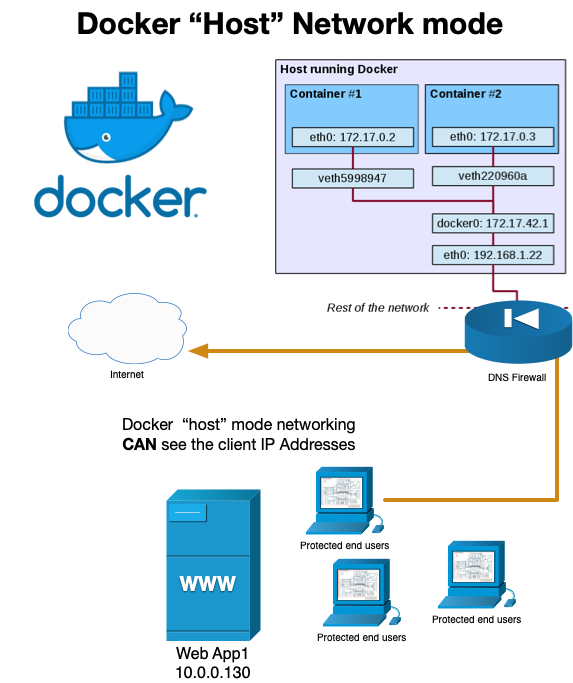

- #DOCKER IP ADDRESS OF ANOTHER CONTAINER INSTALL#
- #DOCKER IP ADDRESS OF ANOTHER CONTAINER UPDATE#
- #DOCKER IP ADDRESS OF ANOTHER CONTAINER PASSWORD#
Docker doesn’t do anything to support these env vars.

You’ll see many apps (including the MySQL image and the todo app)Īlso support env vars with a _FILE suffix to point to a file containing the variable.Īs an example, setting the MYSQL_PASSWORD_FILE var will cause the app to use the contents of the referenced fileĪs the connection password. These secrets are mounted as files in the running container. Diogo Monica, the former lead of security at Docker,Ī more secure mechanism is to use the secret support provided by your container orchestration framework.

While using env vars to set connection settings is generally ok for development, it is HIGHLY DISCOURAGED MYSQL_DB - the database to use once connected.
#DOCKER IP ADDRESS OF ANOTHER CONTAINER PASSWORD#
MYSQL_PASSWORD - the password to use for the connection. MYSQL_USER - the username to use for the connection. MYSQL_HOST - the hostname for the running MySQL server. The todo app supports the setting of a few environment variables to specify MySQL connection settings. our app only simply needs to connect to a host named mysql and it’ll talk to theĭatabase! It doesn’t get much simpler than that! While mysql isn’t normally a valid hostname,ĭocker was able to resolve it to the IP address of the container that had that network alias (remember the (your IP address will most likely have a different value). In the “ANSWER SECTION”, you will see an A record for mysql that resolves to 172.23.0.2 flags: qr rd ra QUERY: 1, ANSWER: 1, AUTHORITY: 0, ADDITIONAL: 0 >HEADER<<- opcode: QUERY, status: NOERROR, id: 32162 There are two ways to put a container on a network: 1) Assign it at start or 2) connect an existing container.įor now, we will create the network first and attach the MySQL container at startup. If two containers are on the same network, they can talk to each other. Now, you don’t have to be a network engineer (hooray!). So, how do we allow one container to talk to another? The answer is Remember that containers, by default, run in isolation and don’t know anything about other processes #DOCKER IP ADDRESS OF ANOTHER CONTAINER UPDATE#
So, we will update our application to work like this: Which adds complexity to container startup/shutdownĪnd there are more reasons.
Running multiple processes will require a process manager (the container only starts one process),. You don’t want to ship your database engine with your app then. While you may use a container for the database locally, you may want to use a managed serviceįor the database in production. Separate containers let you version and update versions in isolation. There’s a good chance you’d have to scale APIs and front-ends differently than databases. #DOCKER IP ADDRESS OF ANOTHER CONTAINER INSTALL#
The following question often arises - “Where will MySQL run? Install it in the sameĬontainer or run it separately?” In general, each container should do one thing and do it well. But, we now want to add MySQL to theĪpplication stack. Up to this point, we have been working with single container apps.







 0 kommentar(er)
0 kommentar(er)
